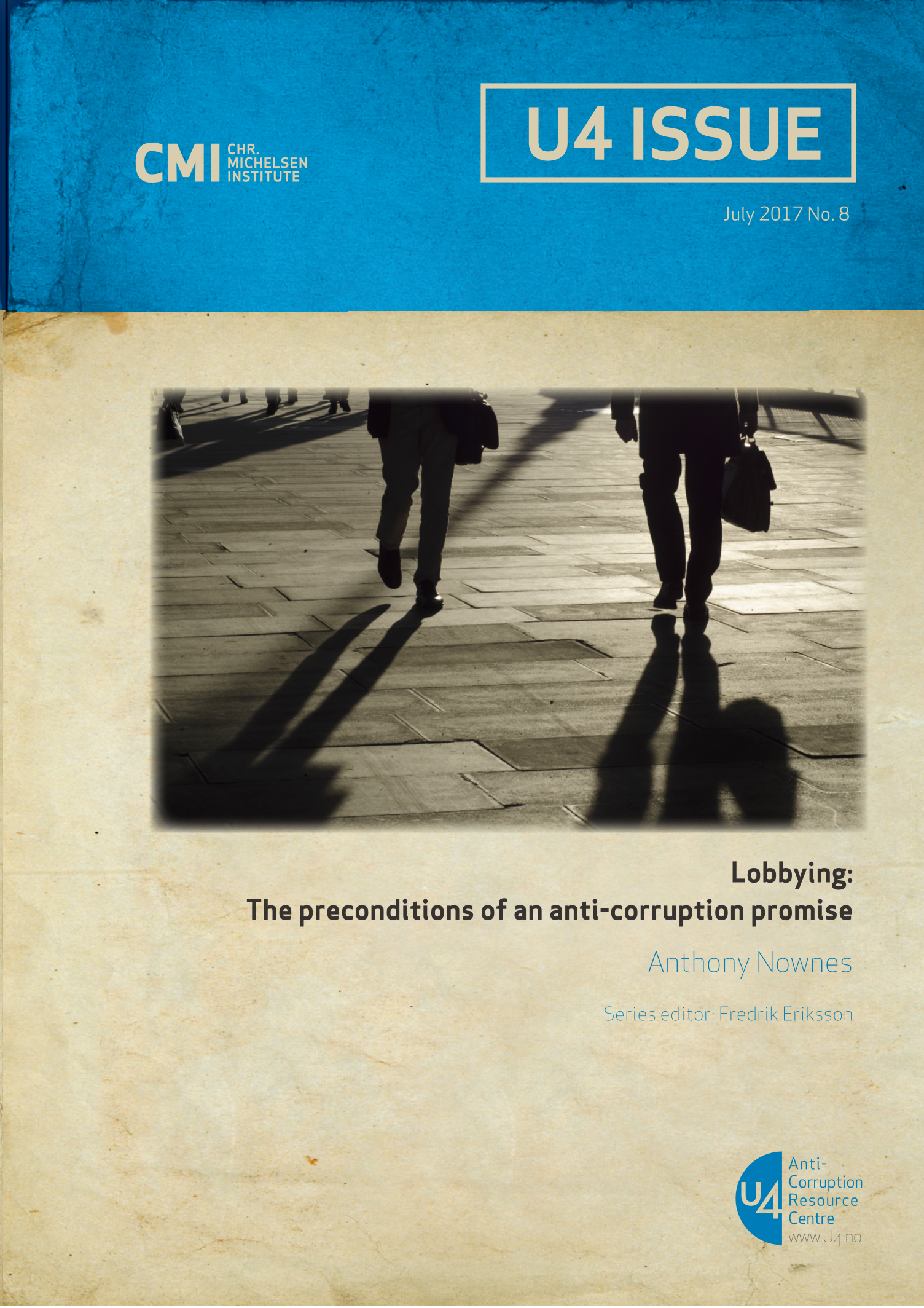U4 Issue
Lobbying: the preconditions of an anti-corruption promise
Can lobbying be a realistic and legitimate alternative to corruption in less developed countries? This paper addresses this question by: (1) delineating the differences and similarities between lobbying and corruption; (2) discussing the research on lobbying in less developed countries; (3) concluding that at this point we do not have enough information to address this question; and (4) suggesting that more research is required to clarify the relationship between lobbying, corruption and governance regime types.
In the end, the answer to the question, “Can lobbying be a realistic and legitimate alternative to corruption in less developed countries?” is unknown. But a number of intriguing clues suggest that the answer may be “Yes.” But there is much more work to be done.
Main implications that donors should know about
by Fredrik Eriksson
To citizens in many countries, the words lobbying and corruption are virtually synonymous. It is important to recognise, that while both lobbying and corrupt activities seek to influence government, there are nevertheless clear and obvious distinctions between the two. For example, lobbying is legal, while corruption is not. Moreover, lobbying does not clearly entail any breach of trust, while corruption does. In addition, lobbying seeks to influence government decisions by providing information that may or may not satisfy a certain interest, while corruption seeks to influence government authority through some means that provide a “private gain.” Finally, an important difference is that corruption is, of course, considered bad by anti-corruption advocates, while lobbying to influence policymaking is not viewed as a corrupt or illegitimate activity by itself. Rather, it is often viewed as an important element of government decision-making processes in many developed countries. Furthermore, recent research has suggested that lobbying can be viewed as a substitute to corruption.
But does this mean that lobbying should be part of the anti-corruption agenda as a substitute for corruption? Can it be effective in reducing corruption especially in contexts where corruption is particularly problematic? As a means to provide information to influence government decisions, lobbying may even be an easier way for development partners to approach the sensitive issue of addressing corruption.
If there is one thing anti-corruption reformers have learned, it is that many anti-corruption efforts have had little expected effect. If anti-corruption reformers begin to push the notion that lobbying can be a substitute for corruption in a specific country, this encouragement must be accompanied by a lobbying regime plan, which is a configuration of lobbying norms and possibly rules. But a good lobbying regime plan cannot and should not be developed before knowing more about the relationship between both lobbying regimes and corruption, and lobbying regimes and governance regimes. As these relationships may differ across contexts, it is important that any such initiatives are based on specific country research, and not imported from other countries with unrelated contexts.
Consequently, as research on these relationships in developing country contexts hardly exist, the main recommendation is that donors and others seek to learn more. Only thereafter will we know if this indeed can become a new anti-corruption measure and under what circumstances it can be effective.

Cite this publication
Nownes, A. 2017. Lobbying: the preconditions of an anti-corruption promise. Bergen: Chr. Michelsen Institute (U4 Issue 2017:8)
Disclaimer
All views in this text are the author(s)’, and may differ from the U4 partner agencies’ policies.
This work is licenced under a Creative Commons Attribution-NonCommercial-NoDerivatives 4.0 International licence (CC BY-NC-ND 4.0)